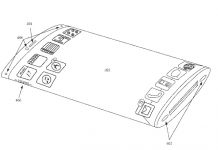 Writer Henry Melton has posted a pair of blog entries meditating on e-book font and layout from a couple of different directions.
Writer Henry Melton has posted a pair of blog entries meditating on e-book font and layout from a couple of different directions.
Melton’s first post, a couple of days ago, looks at the iBooks reader from his perspective as a writer and self-publisher who formats his own printed and electronic books. Fundamentally, Melton was disappointed that underneath the fancy user interface, iBooks was simply going to be another plain-vanilla ePub reader instead of creating a new format that better replicated the printed experience.
When he formats with InDesign, Melton notes, he has a great deal of control over the final look and feel of his book. He can select fonts, adjust word and line spacing, and generally make it look professional.
When an ebook is displayed, the source material has no layout, and relatively inexpensive web browser like software quickly lays out the text line by line. An individual line of the text may look good, but the screen as a whole may look poor. Add to that, a limited font selection, chosen by a reader based on the whim of the moment or personal taste rather than with an eye to compliment the words, and even a perfectly created source ePub file can never be expected to look as good as a well designed paper page.
In his second post, Monday, Melton goes into additional detail about the kind of font choices that are possible in paper books but not in e-books:
A writer can bring to bear various fonts, a range of italic and bold flavors, dozens of underlining and framing options, and even drop-caps. And that’s just for the manuscript. The thing is, because new writers have all this power, they assume that they can use it. The standard manuscript format, instead of being a shining template of order, is viewed as a straight-jacket that chafes. Many people writing their fantasy opus or convoluted mystery use changing fonts like setting a scene. I’ve heard writers muse about writing a story where every character had their own distinctive font so that they could get away from all the he-said, she-said stage direction.
Melton is hardly the first to think about this kind of thing. William Faulkner famously wanted to use different colors of ink to indicate different chronological points of view in The Sound and the Fury, but was told that publishing was not advanced enough. Faulkner would probably have loved desktop publishing.
And I can see where Melton is coming from about wanting more choices in e-book formatting. Having converted a number of e-books into various formats myself, I have run into situations where I could not reproduce the text on the screen exactly as it was on the page (often in situations where some strange layout was used for computerized or telepathic messages) and had to make compromises.
All the same, the second half of the quoted paragraph makes me cringe. I’ve taken a desktop publishing class; I’ve learned the sort of novice mistakes that DTP newbies make: haphazardly mixing fonts without considering how they might clash, for example. I can only imagine with horror what stories where each character has his own font might look like.
I’ve also seen some brilliant examples of eye-bleeding webpage design caused by novice web designers being overwhelmed by the wide variety of choices available to them. After a little too much of that sort of thing, I can’t help but feel blessed by the enforced simplicity of e-book readers for eliminating at least one kind of bad design.
When you get right down to it, it’s just as Mark Coker of Smashwords said in his piece on e-book formatting for authors:
For long form narrative books, which is what most people read, readers buy books for the words, not the formatting. Don’t let your formatting get in the way of the words.
And Paul Biba covered a speech from Digital Book World in which Liza Daly of ThreePress Consulting indicated that even the simpler e-books are often rife with formatting errors and other blunders. If current e-book publishers can’t even get this simpler format right, perhaps they should hold off on trying to make anything fancier.
Note: I previously covered another Melton blog post on the challenges of e-book format conversation.































I cringe a bit as well. I appreciate Henry’s points, but as someone with middle-aged eyes, being able to use a font and size that works for *me* is one of the big advantages of an ebook reader (and one of the reasons I generally prefer reading on my Cybook to my Kindle).
There are ways to design ebooks effectively without making the user relinquish control, and some types of content require more advanced formatting.
Overall, though Mark Coker has it right, and I agree 100% that publishers need to do a much better job at basic formatting and proofing (especially if they are going to demand higher prices).
I’m pretty much horrified by what Melton’s saying. The whole reason I NEVER bought ebooks for my eBookwise reader was because I didn’t have control over the font/size and couldn’t stand to read the default.
One of the things I love about the Sony 505 and Calibre is that it’s so easy to make the font something that will work with MY eyes.
I don’t care if he’s the author of what I’m reading, who is he to tell my what’s readable for MY eyes. I’m kind of incoherent at the arrogance of that.
I’ve run into a few ePubs with hardwired fonts and margins–on ADE. So far, all are annoying and there is no added value in the hardwired stuff. I load them into FBreader and the problem goes away because FBReader overides all mandated formatting in favor of (extensive) user preferences.
Me, I prefer to have a uniform reading experience without having to recreate/reformat a book. It’s my eyeballs at stake, after all.
I don’t mind if the author feels the need to expend massive effort to embellish the look of his ideas…
…as long as I’m not *forced* to put up with it *if* I don’t care for it. I supoose that sort of mindset explain why some folks are so fond of pretend-paper document formats like pdf or the like. They’re perfectly entitled to do whatever they feel like, just as I’m entitled to override them or, if it comes to it, *not* buy.
I buy books for their ideas, not for the formatting eyecandy.
I agree that e-books need streamlined formatting, if for no other reason than that screens aren’t good enough yet. However, where is the limit? Fonts seem unpopular. What about italics? Should we get rid of that as well? How about punctuation, quote-marks, and letter case? All of these new inventions are just part of the technology of putting words in front of eyes.
Plus each has its trade-off. Where is the sweet spot in getting the story into the reader’s mind with a minimum of distraction?
I have opinions, but no convictions. Not yet.
It sounds like a lot of the complaints print people had with the web, when it first arrived, and to this day.
I understand the press-dedicated writer’s desire to take control of what they create. For people like Henry, I can only say: Put it in PDF.
But the whole point to digital text is the presentation of the words in a more flexible and malleable state, customizable by the reader. It’s not supposed to “replicate” the printing experience. Reverting to print practices, and thereby removing the flexibility and malleability, is not the way to go. With digital, the producer just releases the material with appropriate formatting cues. The consumer controls how they view it now.
It’s a new medium; embrace it, or leave it alone. If you’re going to create e-books, do it properly… make them digital. If you don’t want to do that… don’t make e-books.
Henry: I think that’s a little unfair. You know, for the longest time e-books didn’t have italics, and people who formatted them for AportisDoc aka PalmDoc format on the Palm made do with _underscores_ or nothing at all. (In fact, lack of italics was a major complaint leveled against Project Gutenberg’s books in the early days before Distributed Proofing came in and started paying attention to them.)
Then readers such as MobiPocket, eReader (which was called Peanut Reader back then), and iSilo came in, each with its own way of doing italics and other limited formatting (iSilo even supported tables). These were about the limit of what the 160×160 (then 320×320) monochrome LCDs supported at the time.
Then, as the reading technology advanced further, ePub came in as an industry standard offering more choices.
Maybe someday, once display technology has gone through a few more iterations of improvement, there will be a next-generation format offering more choices than that. (Or maybe not.) But at the moment, most display screens are often too small and/or too low-resolution to make trying to make it look “just like a book” work.
Simplifying things makes books look pretty good on the newer hardware while still not abandoning the lowest common denominator of older e-book hardware.
I think you’re right to point to the screen limitations. We’re reaching the point where we need an ebook standard format that supports both the tiny and the 300 dpi 10-inch screen that I won’t be happy without. To do that, ePub or some other standard needs to understand and support the basics of text structure, such as <p> for paragraphs and also blockquote, scene breaks, etc. And then add to that hints for all the rest such as fonts, drop-caps, etc. All of the hints should be easily overridden when screen real estate is tight, but if you have the rich environment, the hints could be used. Then as users, we need to demand that even our small screen reader software understands the basics and doesn’t try to mash paragraphs together or ignore scene breaks.
As for PDF as an ebook format, maybe some day. That forces people to have big screens, and I like my iPhone. For now we need reflowable text. Even PDF viewers don’t understand the basics of text structure as I define it. PDF just freezes one representation, one suited for paper.
Henry, it sounds like you should be spending time with the IDPF to get these formatting desires incorporated into the OEB (ePub) format. We might quibble over which “hints,” as you call them, are required for digital presentation (drop-caps? That’s so eighteenth century!), but I don’t argue that ePub could be improved to include some formatting that it presently does not.
Technically, even PDF doesn’t just freeze one representation. Or at least, the new reflowable PDF doesn’t. Or so I’m told. I don’t have any experience with reading reflowable PDFs, however.
Steve’s suggestion of participating with the IDPF is a good one, though granted there are only so many hours in the day.
Another problem with fonts: not every device has the font the publisher/author would select. Most fonts cost money to use. And fonts that are installed on a device take up valuable memory — something that will choke a small portable like a phone, or even Apple’s tablet.
You can embed fonts in PDF files, but then the file itself — your book — gets a lot bigger both as a download and as a file on your phone, tablet, netbook, or computer.
For really precise work, you could always use html5 with all the CSS that mobile Safari supports, and SVG, and really go crazy. But that’s the job of a designer, not writer.
Writers should write. Unless their name is William Morris (or William Blake).
The prettiest e-books of mine are the ones done as iPhone apps by Touch Tomes. He essentially had the full capability of webkit rendering and it shows.
But I agree, writers should write, so I need to get away from things I know little about and back to the manuscript in progress.
You can embed whatever fonts you want in your ePub files, as long as you think it’s worth paying for the rights to use the font, as well as the huge bloat it’ll add to the file size. While ePub is a bit weak in some areas of formatting, the quotations above just demonstrate Henry Melton’s ignorance of ePub or the weakness of the tools he is using.
Maybe you should make some suggestions as to where he could find out more rather than insulting him for his ignorance?
Better to light a single candle than curse the darkness, you know.
@Chris
Ok. To Henry Melton: For more information, please use the internet. I recommend http://www.google.com and http://www.wikipedia.com as starting points.
Not funny, Ben.
1) @Chris: Saying that Melton is ignorant of some features of ePub is hardly an insult in the first place. Do you know how to do everything with it? I certainly don’t. I’m ignorant of many things regarding ePub, and I suspect Melton is too. If you thought I was insulting him, you were wrong.
2) @Chris: Furthermore, as I suggested, perhaps his tools don’t have the ability to create certain formatting that he wants. I’ve never used InDesign to create any ePubs. I prefer to create the xhtml and css myself. Of course, I can’t fault Melton if he’d rather write books than worry about the code.
3) @Chris: My response to your comment actually was intended as a snipe or insult. You may not have thought so, but I found it funny. That said, I’m pretty sure Melton is clever enough to research and educate himself using the internet. It might be insulting to imply otherwise.
4) @No one: My personal opinion on fancy formatting is this: It’s largely unnecessary for novels. Just give me a clean stream of text and I’m happy. A little line spacing, indent on new paragraphs, and (at most) a very very small amount of space between paragraphs, and I’m happy. Occasionally, some more elaborate formatting is called for, like another font to indicate a newspaper clipping or letter, perhaps. That’s certainly not hard to do with ePub.
5) Done.